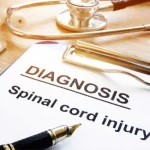
What is Ligamentum Flavum hypertrophy?
Ligamentum Flavum hypertrophy, also known as Ligamentum Flavum thickening, is a health condition related to the spine and lower back.
This condition is usually found in patients suffering from a herniated disc, prolapsed disc, extruded disc (or slipped disc), or protruded disc.
Since this is quite a complicated medical issue, the purpose of this article is to inform and educate people to identify any potential symptoms and act accordingly.
Here are the symptoms and causes of Ligamentum Flavum hypertrophy and how it can be treated.
General Facts About Ligamentum Flavum Hypertrophy and Causes
First off, the main purpose of the Ligamentum Flava is to link the vertebrae (the little rings on the spine) together to ensure flexibility and momentum.
In other words, the Ligamentum Flava is sort of a connective tissue that ensures that the vertebrae stay exactly where they are and prevents them from moving and putting excessive amounts of pressure on the vertebrae below them.
Ligamentum Flavum hypertrophy describes the process through which the Ligamentum reaches abnormal sizes, to the point in which it expands towards the central spinal canal.
This is why some experts use the term ‘’thickening’’ instead of hypertrophy because it catches the essence of this condition more accurately.
Once the Flavum reaches critical mass, it could lead to partial spinal stenosis, which involves an excessive narrowing of the spinal spaces.
In some extreme cases, if this condition is combined with a thickening situated in the front of the canal, it triggers the next phase of the aforementioned condition called ‘’extreme spinal stenosis’’.
While partial stenosis could be easily treated through physical therapy and other conservative means, its extreme counterpart requires surgical intervention. But, again, this is a fringe scenario, but it should be taken into consideration nonetheless.
As for how Ligamentum Flavum hypertrophy or Ligamentum Flavum thickening occurs, scientists and medical experts have yet to determine the exact causes.
However, evidence discovered through recent studies shows that people who have abnormalities in the spinal cord or who have suffered an injury in that area due to assault or motor vehicle accidents have an increased risk of developing it.
Furthermore, there is further scientific evidence that shows these two conditions might appear simply due to natural wear and tear of the spinal cord as the individual advances in age.
The majority of degenerative conditions related to the spinal cord can usually be located in the lower back area.
Other causes that could lead to the development of Ligamentum Flavum hypertrophy and thickening are as commonplace as improper posture and lifting a heavy object incorrectly.
Symptoms and Diagnosis of Ligamentum Flavum Hypertrophy
Individuals who are already experiencing the effects of various conditions related to the spine might not feel any other particular symptoms once Ligamentum Flavum hypertrophy occurs.
However, patients suffering from spinal stenosis might experience greater pain and effects due to Ligamentum Flavum hypertrophy.
The main reason for this is that the thickening of the Flavum could gradually worsen any preexisting spinal conditions.
Things can get even more complicated if the patient already has arthritis or has a herniated disc. In this scenario, the individual will have problems moving and accomplishing day-to-day tasks might increase the levels of pain and the condition itself.
As soon as these factors occur, the only possible treatment is surgical intervention.
If the Ligamentum Flavum hypertrophy or thickening develops gradually and naturally as a result of aging, the spinal cord might suffer injuries, prohibiting normal movement and causing excessive pain.
This condition normally appears in persons at or above the age of 50, although improper posture or negligence can trigger it at a younger age.
As for the diagnosis, to get a clear picture and determine the approximate causes, doctors will recommend doing an MRI scan of the spine. The purpose of the MRI scans is to rule out any conditions with similar symptoms such as disc bulge and disc herniation.
If the images show a clear, noticeable physical deterioration of the spine resulting from the thickening of the Flava, medical experts can then safely declare the patient has developed Ligamentum Flavum hypertrophy and recommend the appropriate treatment.
How is Ligamentum Flavum Hypertrophy Treated?
There are several ways to treat this condition. Once the doctor performs an accurate diagnosis, they can determine how to treat Ligamentum Flavum hypertrophy and whether or not the patient will need to go through a recovery phase.
The first method involves prescribing NSAIDs (nonsteroidal anti-inflammatory drugs) to cut down the levels of pain experienced by the patient and to soothe the inflammation.
In conjunction with taking medications, depending on the specificities of the case, the medical expert might send the patient to physical therapy.
These classes consist of medically proven methods of strengthening the spine, reducing the pressure caused by the misalignment of the vertebrae, and relieving any associated symptoms and pains through special exercises and low-impact physical activity.
However, if these conservative methods of treatment do not show any significant effects, doctors might recommend surgical intervention.
These procedures are, in most cases, standard and involve a minimal level of invasiveness.
The surgeons will make a small incision, through which the required medical instruments will be inserted, in conjunction with a camera for increased visibility.
By doing this, the doctors can treat the abnormality on the spot.
If the condition has reached a chronic state, doctors might recommend another type of surgery that is more complicated and invasive.
This procedure is called a ‘’laminectomy’’. Unlike the surgical intervention mentioned in the previous paragraph, this one takes a longer time to perform and is followed by a long, arduous recovery phase.
Other treatments involve methods specific to alternative medicine. One of them is chiropractic – the expert will do several exercises that could help stabilize the spine and relieve any associated pains.
The other one is acupuncture, in which needles are utilized to stimulate specific zones under the skin.
Regardless of the method, the patient opts for, acupuncture and chiropractic treatments be as effective as other conservative treatments.
Conclusion
Ligamentum Flavum Hypertrophy is a condition that develops due to a wide variety of causes, such as degenerative spinal conditions triggered by natural aging, incorrectly lifting heavy objects, or going through a motor vehicle accident.
While in most cases, this condition can be easily treated through conservative means such as medication or physical therapy, some might require surgical intervention.
Nevertheless, like always, preventive measures such as maintaining a correct posture could eliminate the possibility of this condition occurring.
Make sure to read through this article, and you will get all the information that you need.



![[Adult Acne] Common Causes, Remedies, and Best Treatments Adult Acne](https://www.safeandhealthylife.com/wp-content/uploads/2023/02/Adult-Acne-150x150.jpg)
